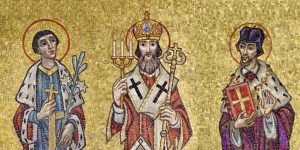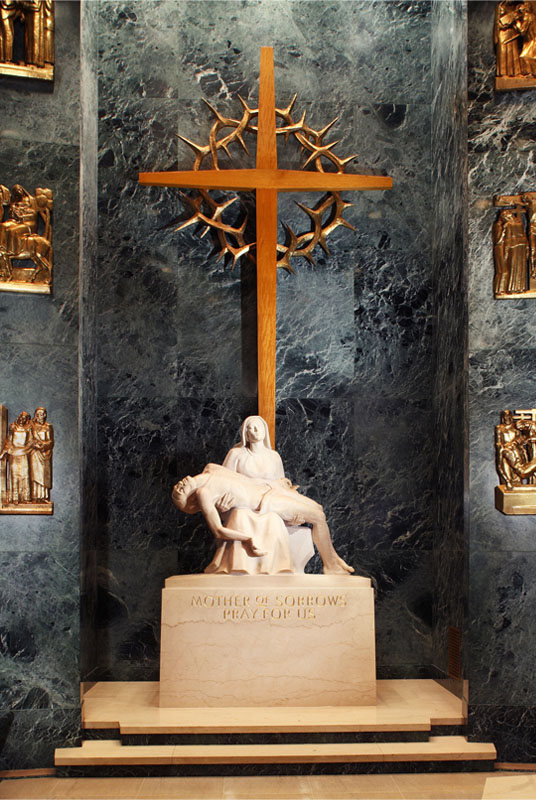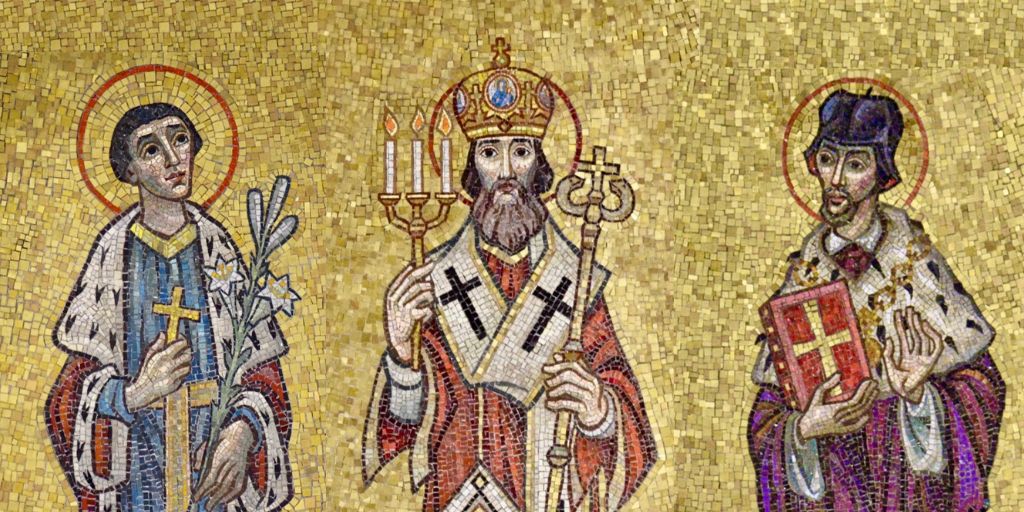
One of the most beautiful things about the Catholic faith is that it knows no boundaries; since Jesus’ death and resurrection, men and women from all walks of life have come to know His saving love – whether they were humble bakers or national rulers.
As we celebrate the Feast of Our Lady of Czestochowa on August 26, we invite you to discover six saints who were instrumental in furthering Catholicism throughout Poland. From founding new Catholic institutions to supporting reforms in the Church, each of them used their positions to glorify God.
1. St. Hedwig

Born in a castle in the Andechs region in approximately 1174, St. Hedwig was raised as a member of the German nobility. When she was 12, Hedwig was sent to Poland to wed Henry, Duke of Lower Silesia. Over the course of their marriage, Hedwig and Henry had many children, but only two lived to adulthood. Amidst the pain of her loss, Hedwig found solace in her faith. With the help of her husband, Hedwig founded numerous monasteries, hospitals, and churches, and in 1202, the couple even used their own assets to establish the first house of religious women in Silesia: the convent of the Cistercian nuns at Trebnitz.
After the birth of their last child, Hedwig and Henry chose to live out the remainder of their union in chastity. Hedwig dedicated her life solely to serving the less fortunate, offering her castle to shelter the homeless and disabled. She also became greatly involved in the work at the Trebnitz convent, where she took permanent residence following Henry’s death in 1238. For the next five years, she lived as a Cistercian lay sister, but did not take any religious vows so that she could still use her wealth to support a variety of charitable efforts. She also continued to assist the poor, and near the end of her life, she spent much of her time in meditation and prayer. Hedwig passed away at Trebnitz on October 15, 1243, and her daughter Gertrude carried on her legacy of service, later becoming the Abbess of the very convent Hedwig helped found and support.
Saint Hedwig was canonized in 1267 by Pope Clement IV, and is depicted in mosaic tile in the dome of the Our Lady of Czestochowa Chapel.
2. St. John Kanty (John of Cantius)
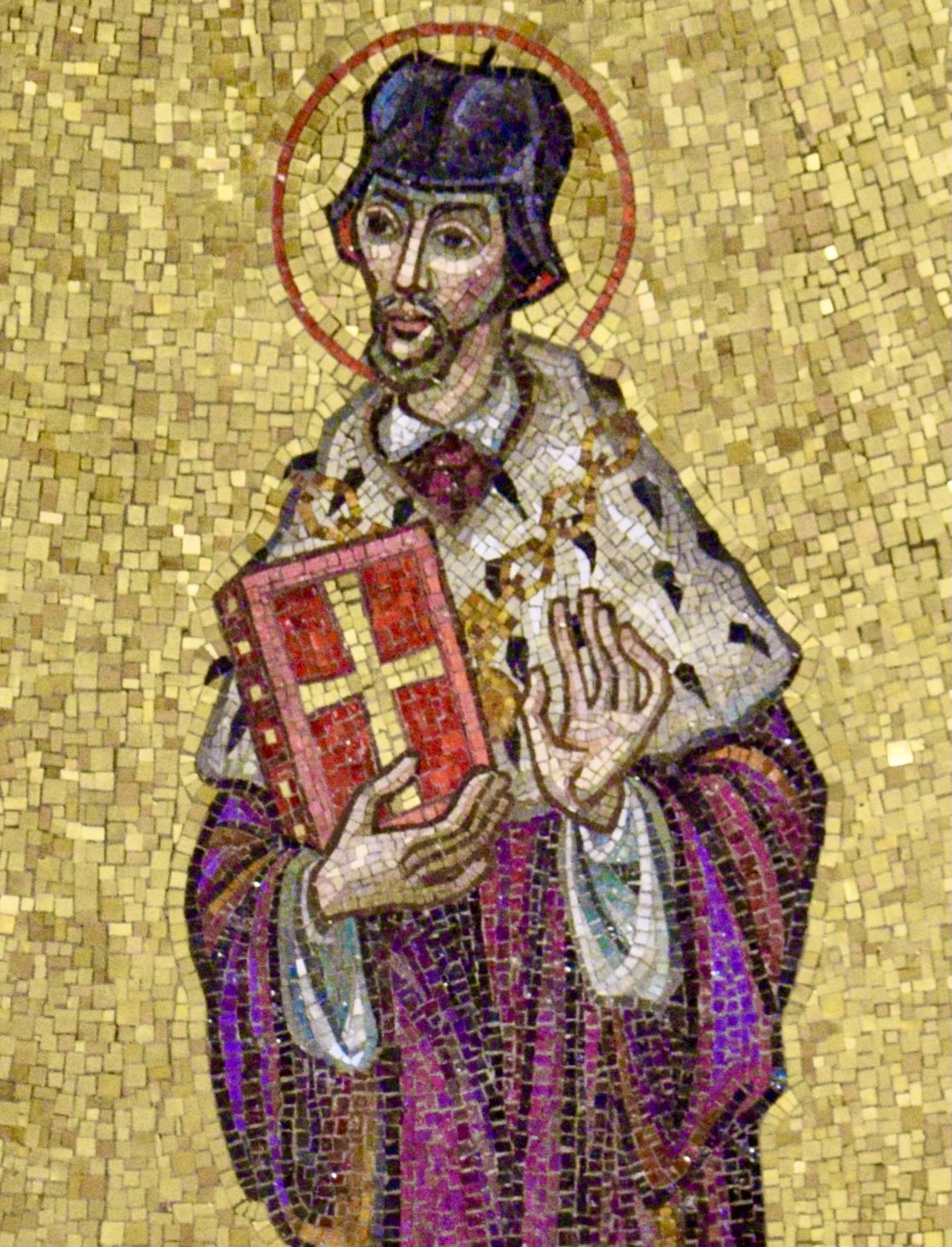
A man of humble origins, John was born in Poland around the turn of the 15th century and graduated with a doctorate from the Academy of Krakow, where he became a professor of theology following his ordination as a priest. However, John’s tenure did not last long, as fellow professors grew jealous of how popular he became with the students, and falsely accused him of wrongdoing. Without even giving him a chance to defend himself, the school leaders sent him to serve as a parish priest at the town of Olkusz.
Though John poured his whole heart into serving his parishioners, he hadn’t given up on the academy; when the charges against him were proven invalid years later, he returned to the Academy of Krakow to serve as the professor of Sacred Scripture. Despite all the ill will he had suffered at the school, he did not behave self-righteously, but forgave those who wronged him, and gave most of his earnings to others in need. Over the course of his life, John made several pilgrimages, one to Jerusalem and four to Rome, and it is believed that he performed several miracles. He passed away in 1473 at the age of 61 and was canonized by Pope Clement XIII in 1767.
3. St. Casimir
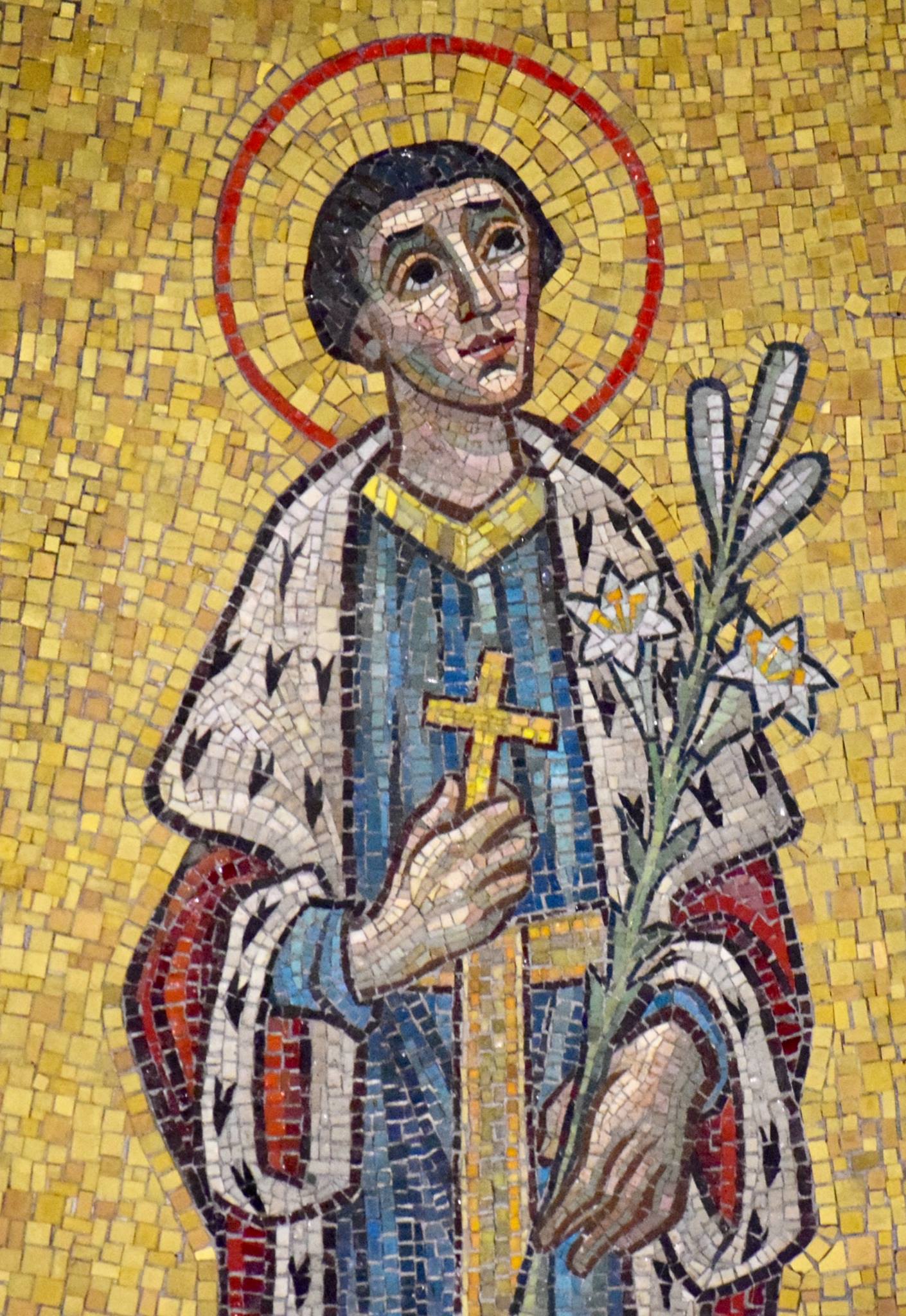
Known for his life of simple devotion and heart for the poor, Saint Casimir of Poland is beloved as the patron saint of Lithuania and Lithuanian youth. Born in Poland in 1458, Prince Casimir showed a remarkable inclination towards religious life from an early age, praying often with great devotion, listening attentively to spiritual teaching, and dedicating himself to charity projects for the poor. A thoughtful young ruler who loved peaceful contemplation rather than military conquest, he demonstrated a perceptive wisdom beyond his years.
After a failed attempt to lead an army as a young man, Casimir was convinced of the futility of armed conflict and resolved to dedicate himself to a more enduring enterprise. He poured his energies into prayer, contemplation, and the study of the Scriptures until he died from tuberculosis at the age of 26. Today, he stands as a shining example of heroic virtues. Saint Casimir is portrayed in the Basilica in the Our Lady of Šiluva Chapel and the Our Lady of Czestochowa Chapel.
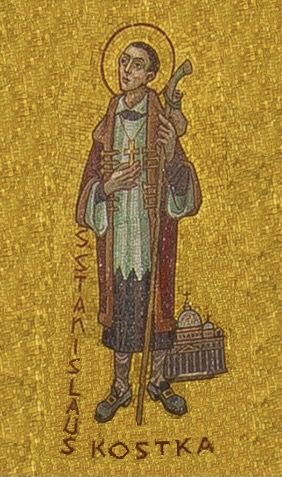
4. St. Stanislaus Kostka
Recognized as the patron saint of the young, Saint Stanislaus Kostka was born into a noble Polish family in 1550. As a boy, he had a “frail constitution and sensitive nature,” but he didn’t let that prevent him from aspiring to serve the Lord in bold ways. When he grew up, he decided to become a novitiate of the Jesuits in Rome – a mission that was met with hostility by his family. They were so opposed to his intentions that he had to depart in secret and fled to Rome on foot with them in hot pursuit. Against all odds, Stanislaus successfully arrived at his destination.
Stanislaus strived to live by the motto “Ad maiora natus sum” (“I was born for greater things”). By becoming a novitiate of the Jesuits, he fulfilled that destiny and answered God’s call for his life. As a novitiate, Stanislaus demonstrated enduring humility and devotion, always dedicating himself to prayer. Tragically, he fell ill and died shortly after beginning his new vocation, at the young age of 18. St. Stanislaus is depicted in Trani marble in the West Apse of the Great Upper Church, flanking the Chapels of the Joyful Mysteries, and in the Our Lady of Czestochowa Chapel.
5. St. Josaphat
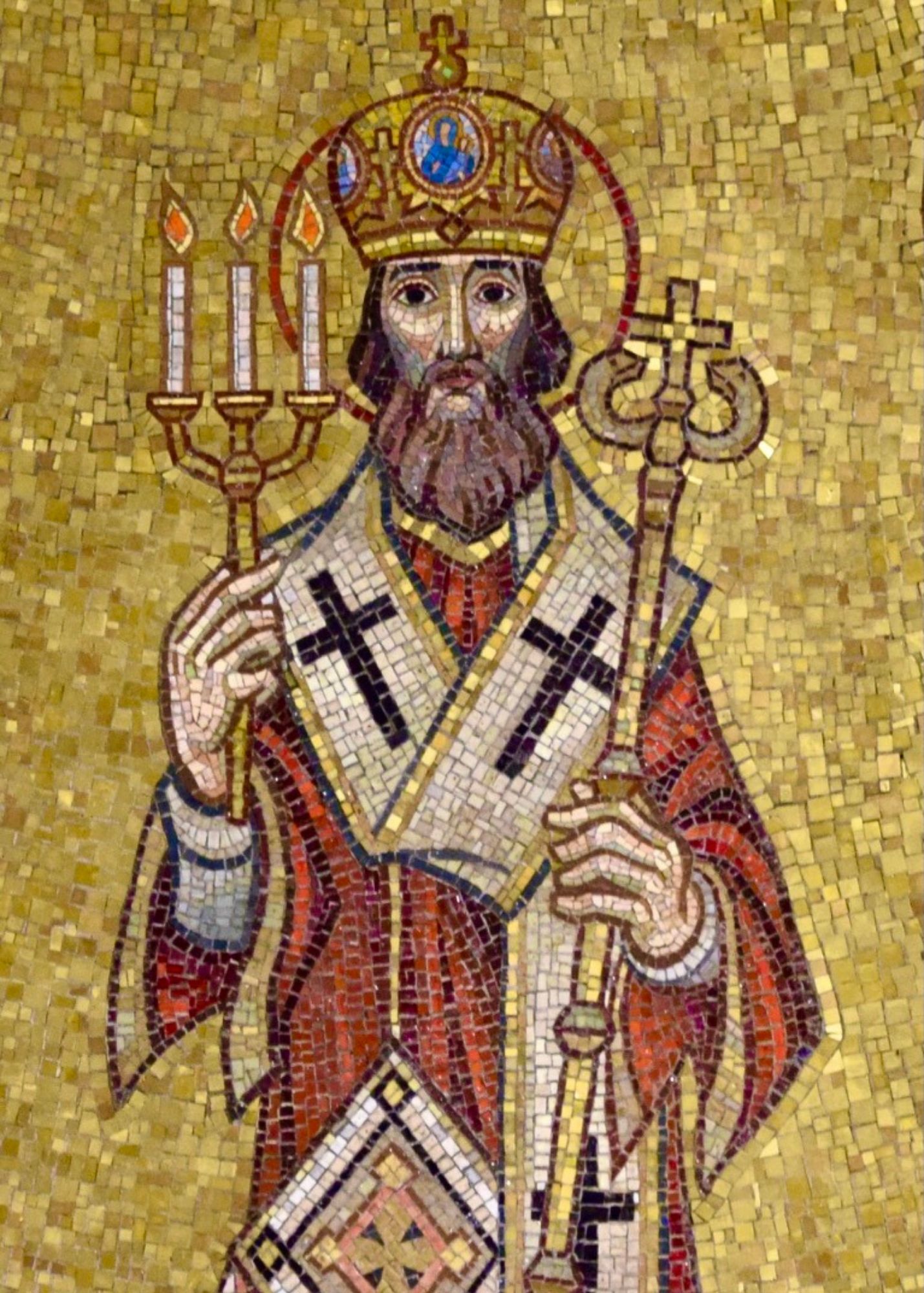
Born as John Kunsevich in 1580, St. Josaphat took orders with his friend Joseph in 1604 in Vilna, a region in present-day Poland. There, he took the name Josaphat, and worked with Joseph to reform the Ruthenian church, which covered the areas of present-day Belarus and Ukraine. The pair was especially concerned with problems such as laziness and degeneracy among monks, remarriage among secular clergy, and control of church lands by those outside the church. Ultimately, they desired union with Rome – a contentious position, as many local church leaders did not want to submit to the pope’s oversight, especially since those in Rome knew nothing about the area’s culture and differing Christian traditions.
As the two men fought for reform, they also ascended to positions of greater influence and continued to draw opposition. To impede Josaphat’s work, some church leaders began to plot against him and wrongfully accused him of encouraging violence and closing non-Catholic churches. As part of the sabotage effort, a local priest named Elias went to Josaphat’s home to antagonize him and his servants; when he refused to desist, Josaphat had him arrested. This incited the anger of Josaphat’s opponents, and a violent mob stormed his home, calling out “Kill the papist!” They proceeded to knock him on the head with a halberd before shooting him and throwing his body into the Dvina River. But Josaphat had not labored in vain; following his death, movement was made in the unification efforts even as the Church struggled with divisions. He was canonized in 1867, and today stands as an example of perseverance and bravery. You can find him portrayed in the Basilica in the Our Lady of Czestochowa Chapel.
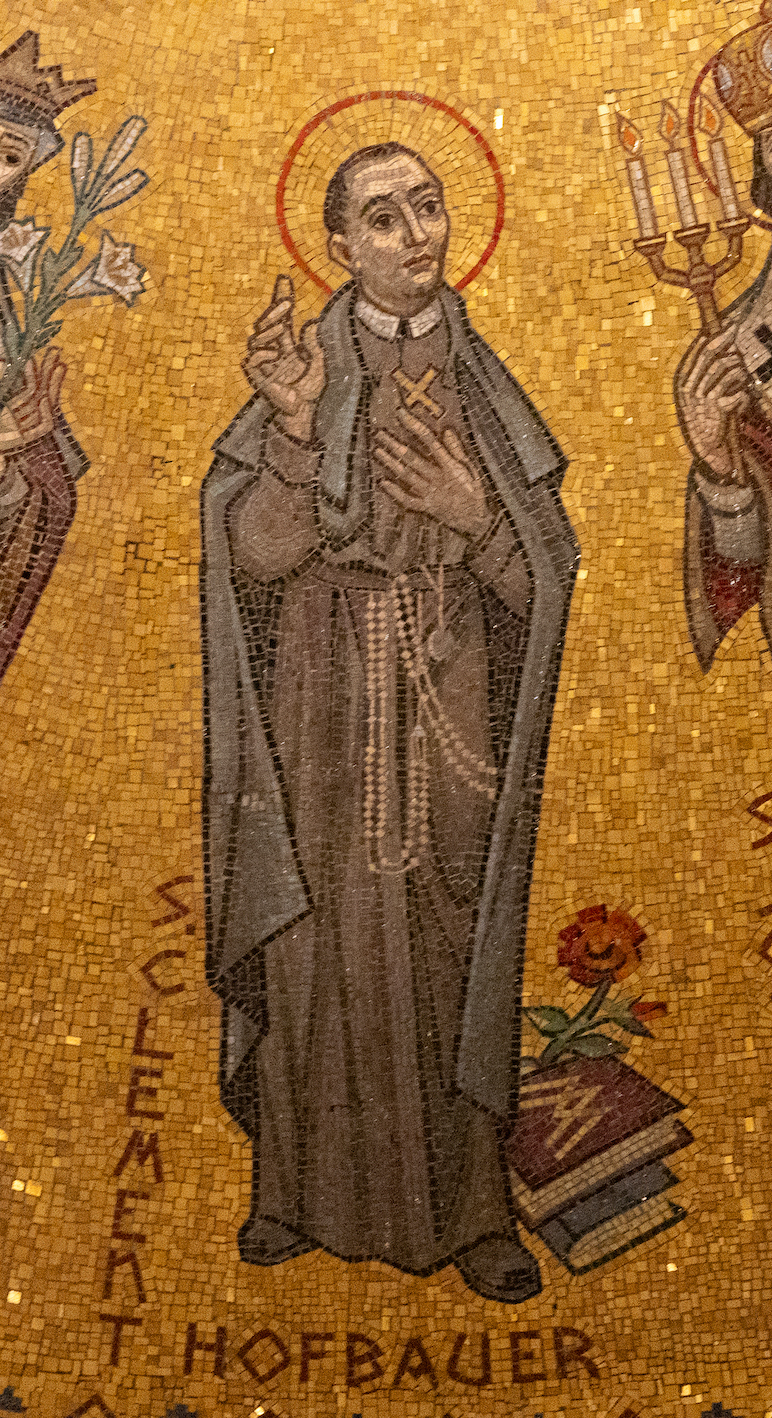
6. St. Clement Mary Hofbauer
Born in Moravia in 1751, Clement Mary Hofbauer was baptized as John. As the ninth out of 12 children, he grew up with little financial means. Although he wished to join the priesthood, the training was too expensive, so he began working for a baker. Eventually he found his way to a monastery kitchen, and was permitted to join the classes in its Latin school, but circumstances later forced him to return to Vienna. However, not long after, God brought two generous women into John’s life who heard of his plight and offered to fund the education of both John and his friend Thaddeus at the University of Vienna. Upon completing their studies, John and Thaddeus joined the Redemptorists in Rome, and when they were ordained in 1785, John took the name Clement. The two eventually settled in Warsaw, Poland, where they began their missionary undertakings.
Despite having few resources, Clement and Thaddeus worked valiantly to spread the Gospel for many years, preaching multiple sermons a day, in addition to establishing an orphanage, a school, and churches in the region. But in 1808, Napoleon ordered that the Redemptorist order in Warsaw be dissolved, and Clement was imprisoned and then exiled. Over the next 12 years, Clement ministered in Vienna, continuing to labor tirelessly to care for the underprivileged and foster spiritual development. During his final years, he sought to obtain governmental approval for the Redemptorist order in Vienna, but it wasn’t until after his death that it was granted. Today, he is known as the patron saint of Vienna. You can find him portrayed in the Basilica in the Our Lady of Holy Hostýn Chapel, the Our Lady of Czestochowa Chapel, the Our Mother of Perpetual Help Chapel, and in a death mask in the Our Lady of Mariazell Chapel.
Sources:
Address of Pope John Paul II, The Vatican.
Butler’s Lives of Saints, ed. Bernard Bangley.
“Message of the Holy Father Francis for the 450th Anniversary of the Death of St. Stanislaus Kostka,” The Vatican.
Rohling, Geraldine M., PhD, MAEd. The Basilica of the National Shrine of the Immaculate Conception: Guide and Tour Book. Washington, D.C.: Basilica of the National Shrine of the Immaculate Conception, 2018.
“Stanislaus Kostka,” Jesuits Global.
“St. John Cantius,” New Advent.
“St. John of Kanty,” Catholic.org.
“St. Stanislaus Kostka,” The Catholic Encyclopedia.
The Way of Saints, Dr. Tom Cowan.

